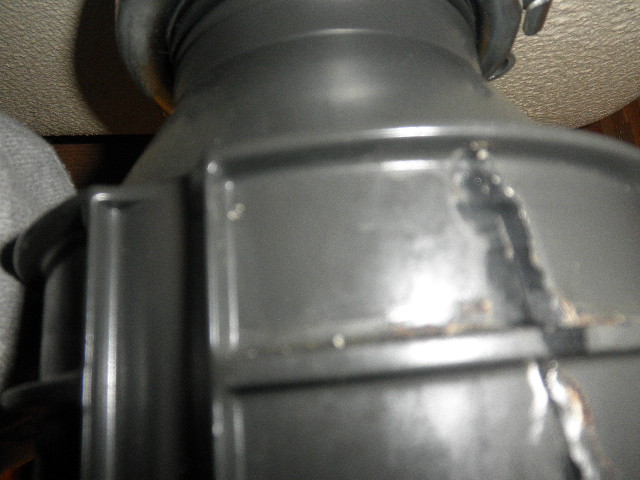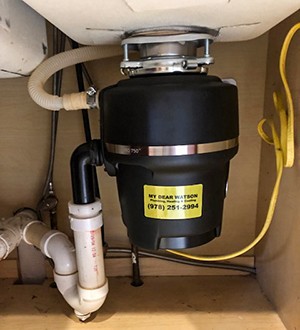Recommended Methods for Resolving a Leak in Your Garbage Disposal
Recommended Methods for Resolving a Leak in Your Garbage Disposal
Blog Article
What are your opinions with regards to Why Is My Garbage Disposal Leaking From the Bottom??

Waste disposal unit are important kitchen appliances that help in getting rid of food waste efficiently. Nonetheless, a dripping waste disposal unit can be an irritating and unpleasant trouble to take care of. Thankfully, many leakages can be dealt with quickly with a few basic steps. In this post, we will talk about just how to repair a leaking garbage disposal efficiently.
Intro
Waste disposal unit are mounted under kitchen area sinks and are designed to shred food waste right into smaller sized items, allowing it to travel through the pipes system easily. While these gadgets are generally reputable, leaks can happen gradually because of wear and tear, loosened links, or damage to the unit.
Step-by-Step Overview to Fixing a Dripping Waste Disposal Unit
Turn Off the Power
Prior to trying any type of repair work, make sure that the power to the waste disposal unit device is switched off to avoid the threat of electrical shock.
Find the Leakage
Determine the precise location of the leak and figure out the reason
Tighten up Links
Use a wrench to tighten any kind of loosened links in between the disposal unit and the pipes system.
Change Seals or Gaskets
If the leakage results from worn seals or gaskets, get rid of the old elements and replace them with brand-new ones.
Patching Cracks or Openings
For cracks or holes in the disposal unit, use epoxy or a suitable patching material to secure the damaged location.
Determining the Resource of the Leakage
Before attempting to take care of a leaking garbage disposal, it is necessary to determine the source of the leakage. This can commonly be done through visual evaluation or by carrying out simple examinations.
Visual Examination
Examine the waste disposal unit unit very carefully for any type of indications of water leak. Pay attention to locations around seals, gaskets, and link factors.
Testing for Leakages
One method to check for leaks is by running water via the disposal device and checking for any noticeable signs of leak.
Common Root Causes Of Leaks in Rubbish Disposals
Worn Seals and Gaskets
Seals and gaskets play a vital role in stopping water from dripping out of the waste disposal unit. In time, these parts can wear away, resulting in leakages around the disposal device.
Loose Connections
The connections between the waste disposal unit and the pipes system can end up being loose gradually, triggering water to leakage out throughout procedure.
Fractures or Openings in the Disposal System
Physical damages to the garbage disposal, such as fractures or holes in the housing, can also cause leakages.
Devices and Materials Needed for Repairing a Leaking Garbage Disposal
Prior to starting the repair service process, gather the essential devices and materials, consisting of a screwdriver, adjustable wrench, plumbing technician's putty, replacement seals or gaskets, and epoxy or patching product for fixing cracks or openings.
Checking the Garbage Disposal After Fixing
When the repair is full, evaluate the garbage disposal by running water via it to make sure that the leak has been resolved.
Preventive Upkeep Tips to Avoid Future Leakages
To prevent future leakages, it is necessary to perform regular maintenance on your waste disposal unit. This consists of keeping it tidy, avoiding placing non-food products or difficult objects down the disposal, and periodically looking for leaks or various other issues.
Final thought
Finally, repairing a dripping waste disposal unit is a relatively simple procedure that can be finished with basic tools and materials. By complying with the actions laid out in this article and practicing preventive maintenance, you can keep your garbage disposal in good working problem and stay clear of pricey repair services in the future.
What to Do About a Leaking Garbage Disposal
A leaking garbage disposal often goes unnoticed until you confront a sopping cabinet, a foul-smelling puddle, or an audible drip-drip-drip from the unit. The fix can be frustrating, too, because the leak can stem from a number of components in the system. Fortunately, with a little sleuthing, you can zero in on the leak and—depending on the exact location—stop the icky oozing and repair the component that caused it. Worst case scenario, if it turns out that the garbage disposal must be replaced, installing a new one is a reasonable do-it-yourself task for those with basic plumbing skills. Read on to keep the cash you’d otherwise hand over to a pro.
Prepare to find the leak
Prior to testing the garbage disposal for leaks, unplug it at the wall outlet and turn off the power from the breaker box to prevent electrical shock. Then insert a watertight sink stopper into your sink drain and wipe the unit dry with a clean cloth. In any handy container, mix a few drops of food coloring into a few cups of water, and pour the dyed water onto the sink stopper to help you locate the leak.
Investigate the source
the top, where the disposal meets the sink drain the side, where the dishwasher hose or main drain pipe connects to the disposal or the bottom of the unit Inspect each of these locations while gliding a light-colored rag over the unit; the dyed water will readily show on the rag and reveal the location of the leak. If a leak isn’t immediately apparent, remove the sink stopper and pour a few more cups of dyed water down the sink drain, then check for leaks again. Leaks near the top of the unit are more likely to show themselves while the sink is plugged, while side and bottom leaks are more noticeable while the sink is unplugged.
The metal sink flange that sits directly inside the sink drain is typically sealed around the top with plumber’s putty (a clay-like sealant) and then secured from under the sink with bolts. If the plumber’s putty deteriorates, or the bolts loosen, the flange can no longer form a watertight seal between the sink drain and the disposal—which could cause a leak at the top of the unit.
To reseal the leaky flange, you must first detach the garbage disposal. Start by loosening the screws securing the main drain pipe to the disposal, then loosen the screws in the metal clamp securing the dishwasher hose to the disposal and detach the drain pipe and dishwasher hose from the disposal. Loosen the screws in the mounting ring that connects the disposal to the metal mounting assembly beneath the sink, then pull down the disposal and carefully set it on a clean, dry surface. Loosen the bolts in the mounting assembly with a wrench, then pull down the mounting assembly and set it near the disposal.

I stumbled upon that blog post on Garbage Disposal Leaking From Bottom when doing a search on the search engines. Enjoyed our piece of writing? Please share it. Let others locate it. I truly appreciate reading our article about Garbage Disposal Leaking From Bottom.
Free Quote Report this page